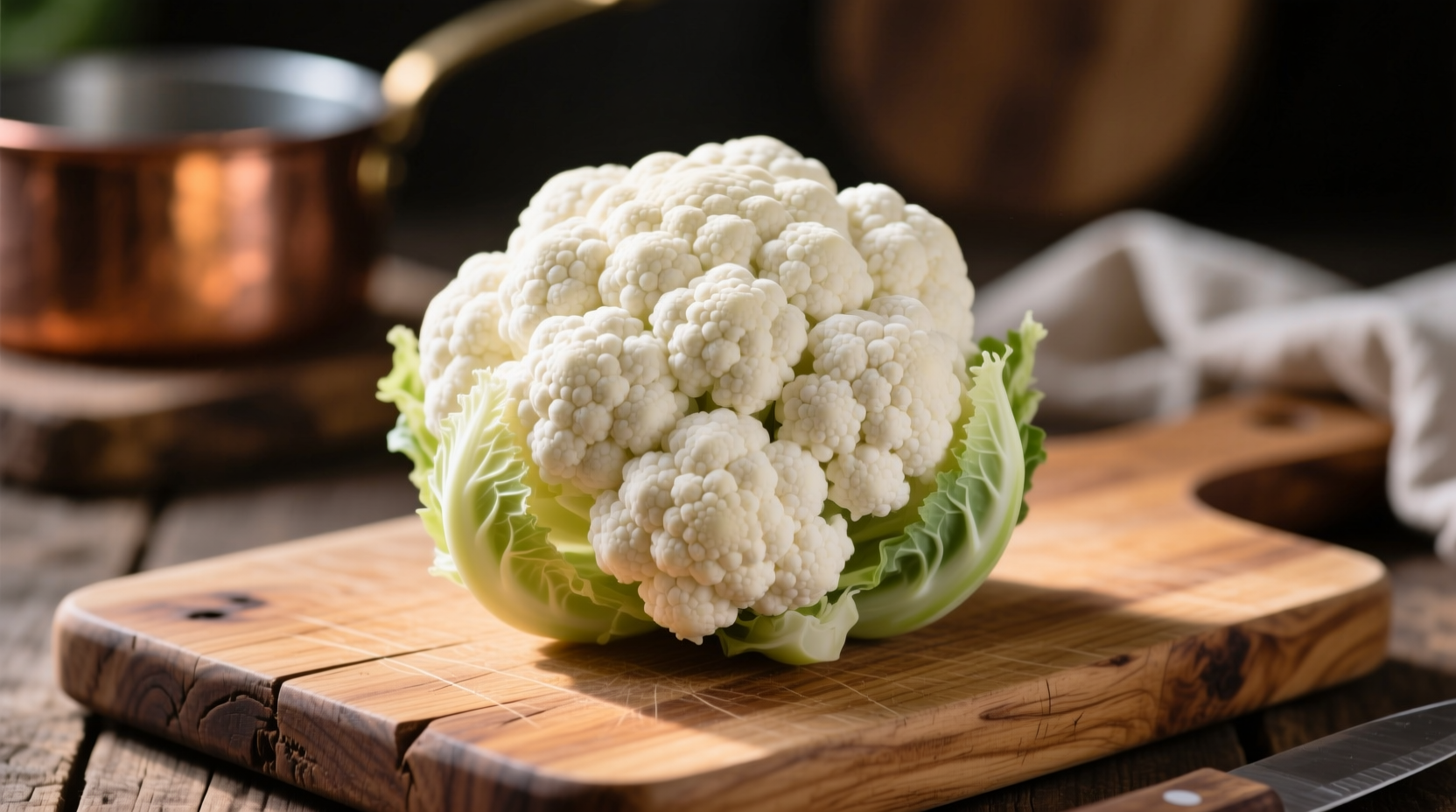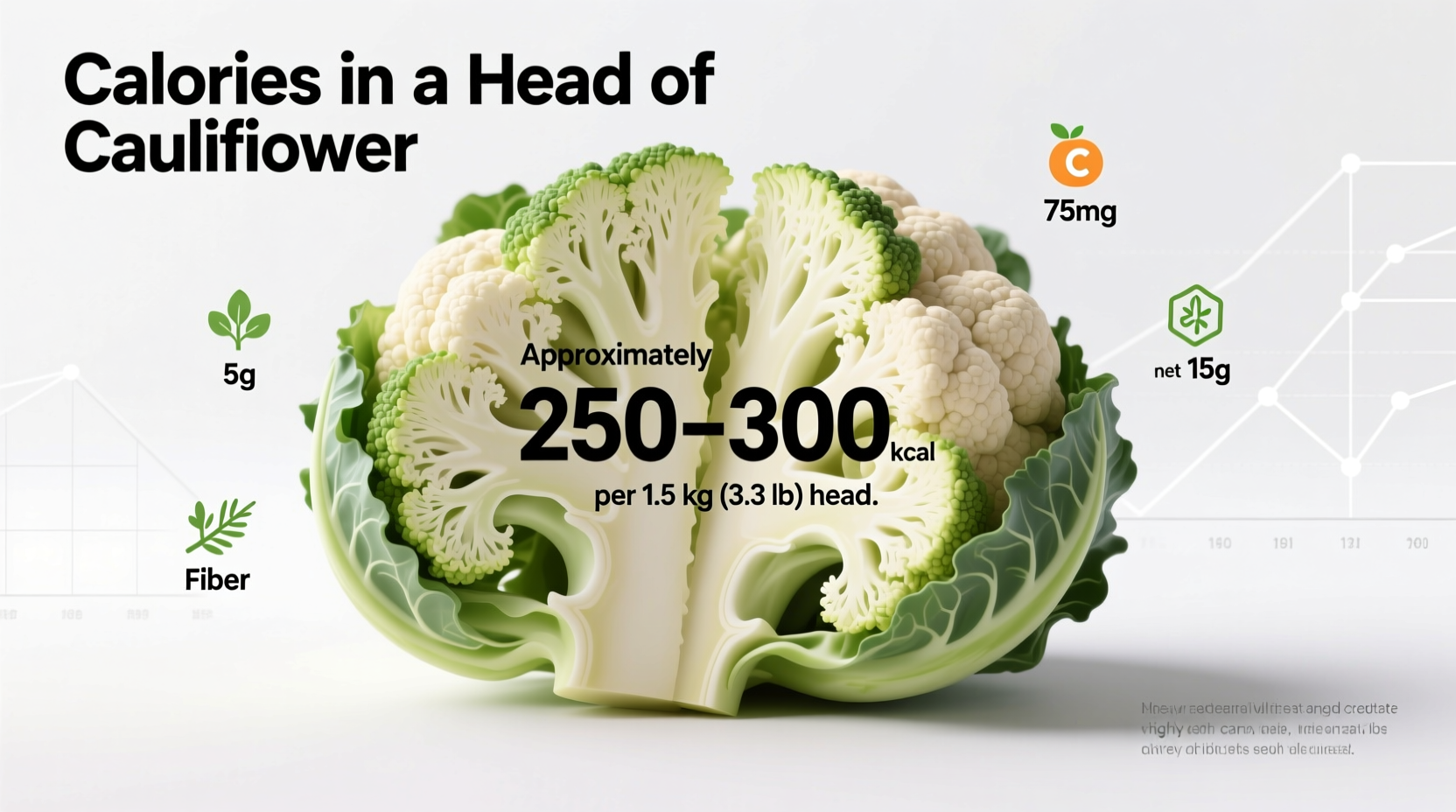Understanding the precise calorie content of whole vegetables like cauliflower is essential for meal planning, dietary tracking, and maintaining balanced nutrition. Whether you're following a specific diet plan, managing portion sizes, or simply curious about your food's nutritional value, having accurate information helps make informed choices.
Why Cauliflower Calorie Counts Vary
Unlike packaged foods with standardized portions, fresh produce like cauliflower naturally varies in size. This variation directly impacts total calorie content. The USDA provides standardized measurements, but real-world heads differ significantly:
| Cauliflower Size | Approximate Weight | Total Calories | Calories Per Cup (Chopped) |
|---|---|---|---|
| Small head | 400g | 100 | 25 |
| Medium head | 587g | 146 | 27 |
| Large head | 800g | 200 | 25 |
This data comes directly from the USDA FoodData Central, the most authoritative source for nutritional information in the United States. The consistent calories per cup (25-27) demonstrates that while total calories vary with size, the density remains relatively stable.
Practical Applications for Daily Nutrition
Knowing the total calories in a whole cauliflower head helps with meal planning in several practical ways:
- Meal prep efficiency: A medium head provides approximately six 1-cup servings at 27 calories each, making it ideal for weekly meal preparation
- Dietary flexibility: With only 146 calories total, a medium head fits comfortably within most calorie-controlled diets while providing substantial volume
- Nutrient density perspective: Those 146 calories deliver 300% of your daily vitamin C needs, 20% of vitamin K, and significant fiber content

Contextual Factors Affecting Calorie Counts
Several variables influence the actual calorie content you'll encounter:
- Seasonal variations: Winter-harvested cauliflower tends to be denser and slightly higher in calories than summer varieties
- Preparation methods: Raw versus cooked values differ minimally (cooking concentrates nutrients slightly as water evaporates)
- Measurement techniques: Weighing your specific head provides the most accurate count compared to visual estimation
According to the National Institutes of Health's Dietary Guidelines, non-starchy vegetables like cauliflower should comprise a significant portion of daily vegetable intake due to their low calorie density and high nutrient content. This context helps understand why precise calorie information matters for balanced nutrition planning.
Comparative Nutrition: Cauliflower vs. Other Vegetables
Understanding where cauliflower stands nutritionally compared to alternatives helps make informed dietary choices:
- A medium head of cauliflower (146 calories) contains fewer calories than a medium sweet potato (103 calories per serving but typically requires larger portions for satiety)
- Cauliflower provides similar volume to broccoli for slightly fewer calories (broccoli head: 157 calories for comparable size)
- Compared to starchy vegetables, cauliflower offers dramatically lower calories per volume - a medium potato contains about 163 calories but provides less volume than a cauliflower head
Practical Measurement Tips for Home Cooks
For the most accurate calorie tracking with fresh produce:
- Use a kitchen scale to weigh your whole cauliflower head before preparation
- Divide the total weight by 27 (calories per 100g) to calculate exact calories
- When recipes specify "1 head," assume 587g as the standard medium size unless otherwise noted
- Remember that cooking methods don't significantly alter calorie content, though they may affect volume
These practical techniques transform abstract nutritional data into actionable information for daily cooking and meal planning. The USDA's MyPlate guidelines emphasize the importance of understanding portion sizes for vegetables to maintain balanced nutrition without unnecessary calorie counting stress.
Historical Context of Vegetable Nutrition Understanding
Nutritional science has evolved significantly in how we understand vegetable composition. Early 20th century nutrition focused primarily on macronutrients, while modern analysis reveals the complex interplay of vitamins, minerals, and phytochemicals. The current precision in calorie counting stems from:
- 1940s-1960s: Basic calorie counting systems developed for rationing and military nutrition
- 1970s-1990s: Standardized food composition databases began forming
- 2000s-present: Digital databases like USDA FoodData Central provide real-time, detailed nutritional profiles
This evolution explains why older nutritional information often lacks the precision we expect today. Current standards reflect decades of refined measurement techniques and analytical methods.
Common Questions About Cauliflower Nutrition
Many people have additional questions about incorporating cauliflower into their diets while managing calorie intake:











 浙公网安备
33010002000092号
浙公网安备
33010002000092号 浙B2-20120091-4
浙B2-20120091-4